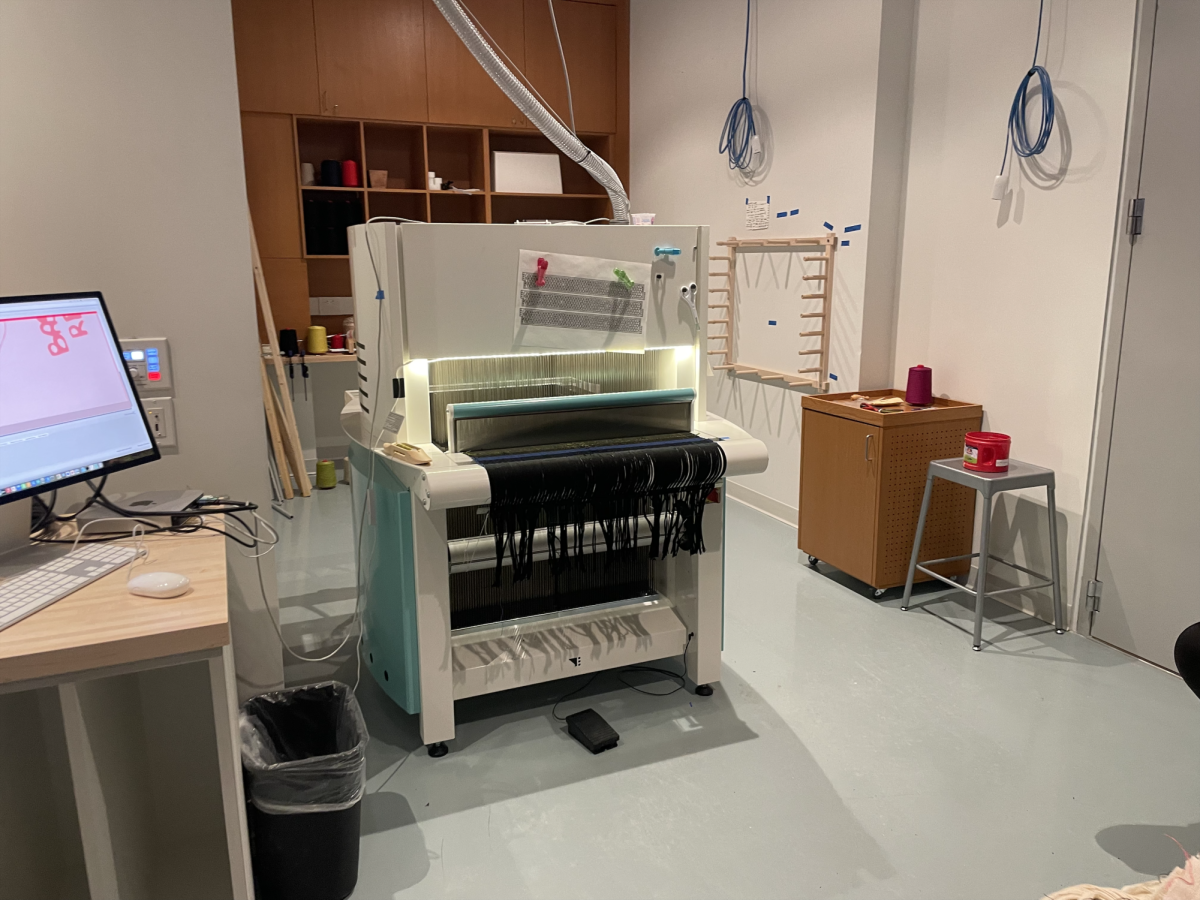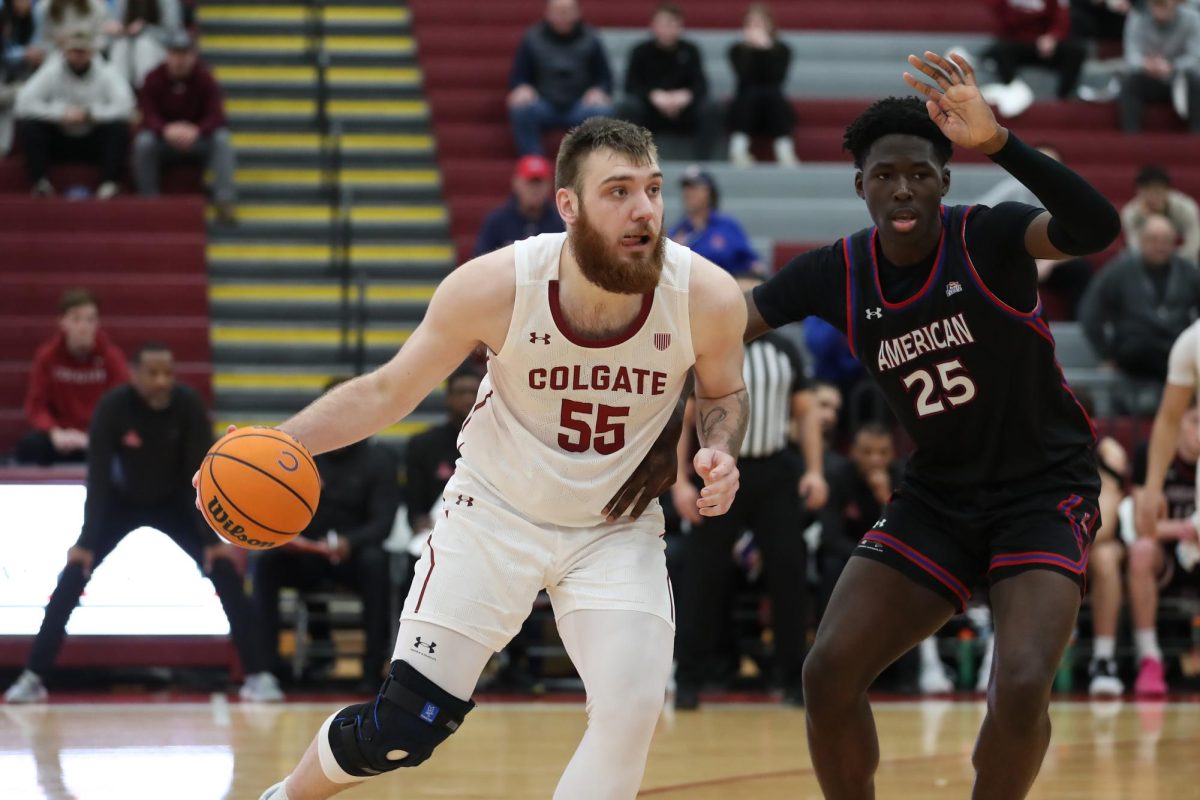Colgate University invited artist Suzanne Husky, who focuses on the interactions between humans and animals, to hold an open studio on Feb. 21 in Bernstein Hall’s new Fabulation Lab. The studio, featuring a digital loom, allowed Husky to weave with new technology. Her textile work has also been displayed at the Picker Art Gallery during their spring exhibition. This open studio was held in collaboration with the Office of Entrepreneurship and Innovation, the Colgate Arts Council and several programs, including university studies, environmental studies, film and media studies, biology, romance languages and literatures, geography and history.
Husky has extensive experience with textiles, having made tapestries and rugs and embroidering in Belgium, the United Kingdom and countries around the world. Husky has used textile weaving to further tell stories about beavers in the wild and share political messages.
“It’s a narrative. You can tell stories with textile, and I depict stories that are political,” Husky said.
She has used textiles for reasons beyond visuals: They also allow her to share stories about the historical role of women in weaving and textile making.
“Historically, women have been assigned to weaving and textile making, so women are masters of time in that sense,” Husky said.
At the open studio, Husky discussed one of her works, which is 11 yards long and depicts the history of human-beaver relations, containing different moments in history in which people have lived in alliance with them.
Visiting Assistant Professor of Art Anne Klein played an instrumental role in the preparation for Husky’s visit. She worked alongside Associate Professor of Art Margaretha Haughwout in setting up the new TC2 loom. They worked to set up digital files and thus structured photographic scans of drawings or paintings into a weaving structure. While the digital loom mainly functions as a traditional loom would, it can directly translate images into woven fabric, allowing students and artists to design or code images digitally.
Textiles have been integral to Klein’s personal artistic practice. Her interest in digital weaving is rooted in its ability to transform digital imagery into a tangible item.
“I think the thing that interests me most about textiles — and, specifically, this digital interface in textiles — is having it be a tactile way for anyone to experience digital imagery by taking it out of the digital ephemeral space of the screen and bringing it out into a material or a physical thing,” Klein said.
Klein believes that digital weaving allows for a unique combination of digital and physical art, with designs being woven into the fabric rather than simply printed on top.
“There’s an instinct to touch and to feel, and I think that that is alien to the way that we think about digital imagery, so it’s nice to have that be a bridge between the two,” Klein said. “[Woven imagery] has this nice in-between space — a really nice way to think about the way that we interact with our digital and physical spaces in a contemporary sense.”
In addition to the open studio, Husky’s visit included an exhibition of her work featuring a panel discussion on the behavior of beavers. The highly-attended event included Neil Patterson, the executive director of the Center for Native Peoples and the Environment at SUNY College of Environmental Science and Forestry, as well as Assistant Professor of Geography and Director of the Environmental Studies Program Mike Loranty, who maps beaver ecologies in the Arctic, and Patti Smith, a naturalist and beaver whisperer in southern Vermont. Husky has also been visiting art classes to show her work and discuss her artistic process. Additionally, Husky has been doing critiques for senior capstone students in film and media studies.
Haughwout has been familiar with Husky’s work for over a decade, and the two have been in conversation for several months. She helped facilitate Husky’s residency at Colgate as the director of the Clifford Art Gallery this year.
“I have been deeply aware of beavers in our watershed, how they function and some of the contestations around beavers,” Haughwout said. “I wanted to expand that conversation and think with an artist that’s been thinking deeply about beavers, so it seemed like a great opportunity to have her. Both the live beaver issue as well as an interest in textiles and amplifying the Fabulation Lab influenced my interest in bringing Husky.”
Since coming to Colgate, Husky has immersed herself into many different aspects of the art and environmental studies departments.
“Husky has had a range of different engagements since she’s been here — pulling many different threads that are a part of her practice and weaving them in, if you will, to the fabric at Colgate,” Haughwout said.
















